Best Forehand Rubbers for Intermediate Players | Table Tennis 2024
So, you're already couple months into playing table tennis and consider yourself an intermediate player.
You learned basic strokes like pushes and drives. Maybe you've also had some success with your first
couple topspins. Now you are ready to take the next step in the table tennis equipment game. It's time
to upgrade your rubber from a classic beginner rubber (like the ones mentioned in our
beginner guide)
and start playing with easy-to-play tension rubbers. Now you might be wondering what a tension
rubber is. Basically, these are rubbers where the sponge has a certain tension to it, so when the ball hits the
racket, it will sink into the sponge first and then bounce off faster giving your game more speed. (Read more about tensor technology in our guide here).
The reason why you wouldn't want a strong tensor effect on a classic beginner rubber (like Mark V and such) is because as a beginner you won't be able to control the increased
speed when the ball shoots off the racket. The solution are so called easy-to-play tension rubbers.
What is an Easy-To-Play Tensor Rubber?
An easy-to-play tensor rubber provides only minimal catapult when the ball leaves your racket after impact which is usually perfect for developing and intermediate players. The ball still sinks into the rubber but the acceleration is slower compared to faster rubbers. With increased experience you will be able to control this speed increase which again will allow you to play faster. Therefore, we do recommend to try out an easy-to-play rubber once you feel confident enough with your old classic rubber. Below you will find a couple of best easy-to-play tension rubbers that can be recommended to get started with:
Best Easy-To-Play Tensor Rubbers 2024
Andro GTT45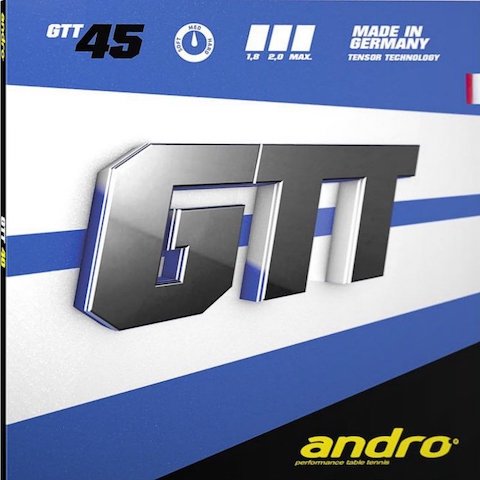
Andro GTT45 sits right in between classic beginner rubbers and advanced tensor products. It is targeted for players who have a couple of months of experience playing table tennis and now want to step up their game by entering the world of tensor rubbers. GTT45's sponge has a medium-soft feeling and works great for improving basic strokes like push, drive and topspin near the table. For intermediate players, we do recommend to try to use GTT45 on your forehand and GTT40 on your backhand because the GTT40's even softer sponge creates more catapult to compensate for most player's weaker backhand power. Bonus: You can get this rubber also in blue or pink color! Recommended sponge thickness:
Rating
|
Nittaku Factive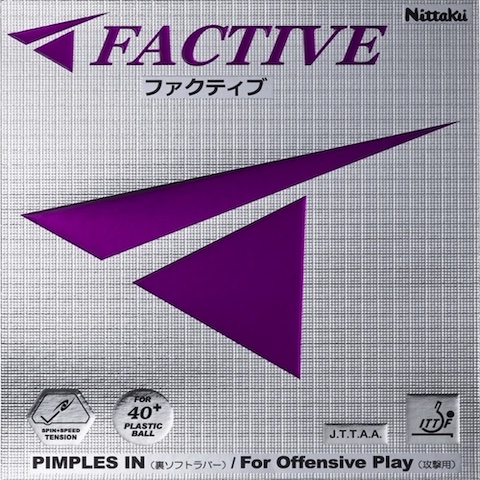
The Nittaku Factive is one of those rare easy-to-play tensors and a great alternative to the Andro GTT45. Its medium-hard sponge is a bit firmer while the soft topsheet allows the ball to sink in until it hits the harder sponge. This unusual combination helps with a longer ball contact time and improves control. For more experienced players however, this rubber will probably be way to slow. If you're an advanced player, then you might want to look for something a little bit faster. The main difference compared to Andro GTT 45 is – besides its purple sponge – that Nittaku Factive has a slightly harder sponge but compensates this with a softer topsheet which gives this rubber a very unique feeling. Read the full review. Recommended sponge thickness:
Rating
|
Xiom Vega Europe
The Xiom Vega Europe is one of the first released rubbers of the ever so popular Vega series.
It's not explicitly marketed as an easy-to-play tensor rubber but that's exactly what it is.
Sponge and topsheet are very soft, producing just a mild catapult effect. Perfect for anyone who switches
from classic rubbers to a tensor product. Compared with Andro GTT 45 and Nittaku Factive, this
rubber is similar in terms of speed and spin generation. Recommended sponge thickness:
Facts
|
Donic Desto F2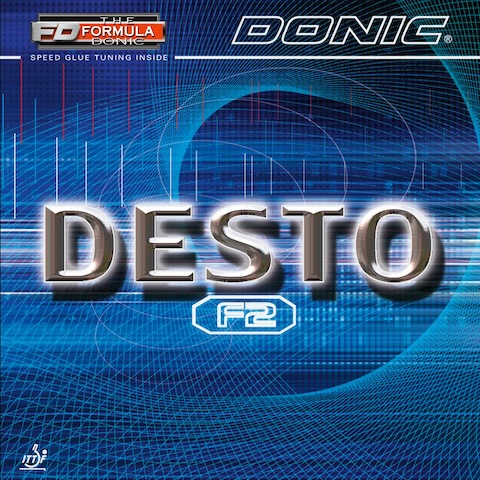
The Donic Desto F2 has been on the market for quite some time now and it comes with a medium-soft sponge and a very soft and grippy topsheet which provides a lot of control and confidence when touching the ball. Besides that, the Desto F2 is also the slowest model from all tested rubbers on this page and creates the lowest arc, so be aware that this rubber is not a tempo monster. The Desto F2 also comes with a very loud, built-in speed glue effect sound which is very audible on harder strokes. This is something the other rubbers in this article don't have. Overall, the Desto F2 is a good but slow rubber which marks the easiest entry into the world of tensors. If you want to learn more, have a look at our extensive review of the Donic Desto F2. Recommended sponge thickness:
Facts
|
Comparison table
| Name | Speed | Control | Spin | Ball arc | Sponge | Topsheet |
|---|---|---|---|---|---|---|
| Andro GTT 45 | Good | Good | Average | Average | Medium | Medium |
| Nittaku Factive | Good | Good | Good | Average | Medium | Soft |
| Xiom Vega Europe | Good | Good | Good | Average | Medium | Soft |
| Donic Desto F2 | Average | Excellent | Average | Low | Medium | Soft |
Table Tennis Blade Recommendations for Intermediate Players
When upgrading from beginner to intermediate tensor rubbers, you can usually keep your beginner blade. However, if you want to step it up a notch, try one of these blades below which work great with any of the rubbers mentioned earlier. The following 3 blades are so called all-wood builds which means that all layers are completely made of wood.
Yasaka Allround Plus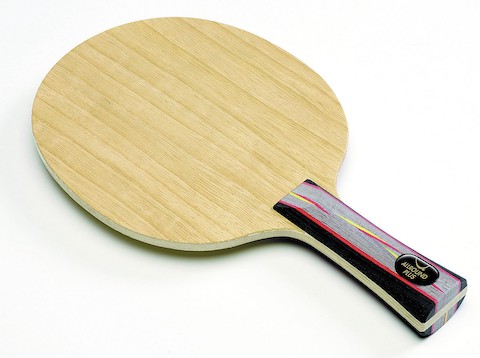
|
Yasaka Sweden Extra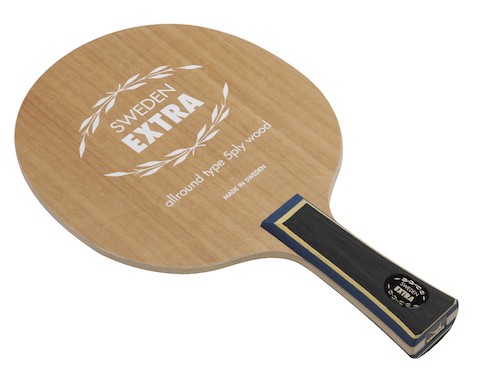
|
Butterfly Korbel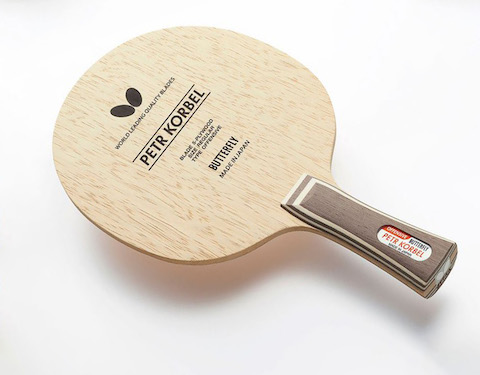
|
Please note that the classic all-wood composition has changed a bit in modern table tennis in favor of carbon inserts. Blades with carbon typically consist of 5 wood layers plus 2 carbon layers. The reason why some blades now include carbon is that with the introduction of the plastic ball rackets now need to be faster. Therefore manufacturers tried to make these harder so they can be combined with softer rubbers which provide more tensor effect (what is tensor effect?). If you're interested in skipping the next iteration of an all-wood blade and go directly for an entry-level carbon product like for example the Nittaku Flyatt Carbon or check out our list of best budget blades. All of these would work best for an intermediate player who trains regularly at least 2 times a week.
 Spin Testers
Spin Testers
